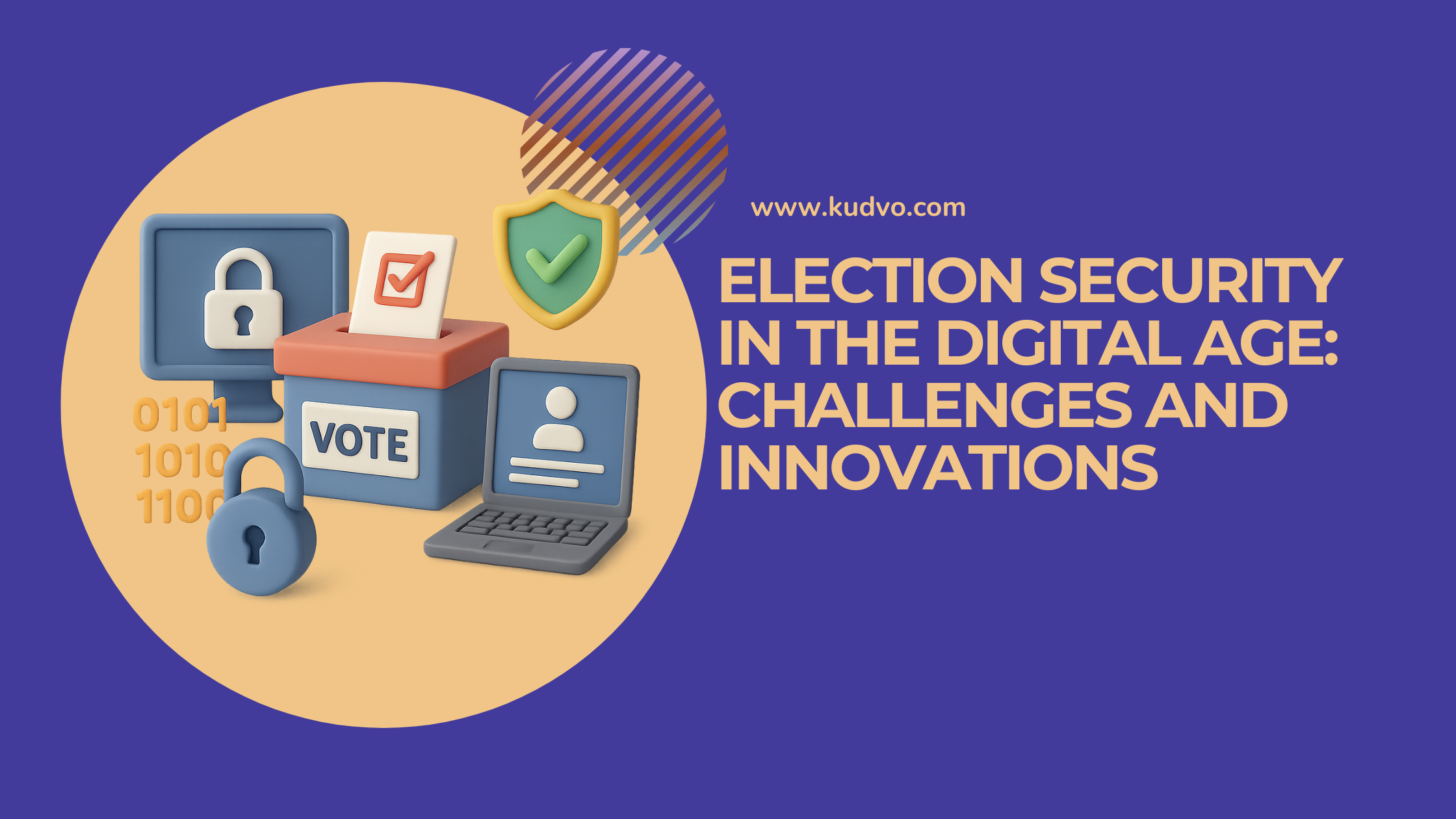Election Security in the Digital Age: Challenges and Innovations
Introduction
Can we trust digital elections?
As voting moves increasingly online and technology becomes a central part of the democratic process, election security has become a global concern. Headlines about data breaches, foreign interference, and misinformation campaigns raise tough questions about how secure and fair digital elections truly are.
But with every challenge comes innovation. In this post, we'll explore the key threats facing election systems today, the cutting-edge solutions making them safer, and how platforms like Kudvo are building trust through secure, transparent digital voting tools.
By the end, you’ll understand what’s at stake—and how we’re meeting the moment.
1. The Key Challenges in Digital Election Security
Digital elections offer accessibility and efficiency—but they also open the door to cyber threats, misinformation, and logistical complexity.
⚠️ Common Threats Include:
Cyberattacks: Hackers can target voting systems, voter databases, and election results.
Disinformation: Online platforms are often used to spread false or misleading information to confuse or suppress voters.
Voter Privacy Concerns: Digital systems must ensure that ballots remain anonymous while still being verifiable.
Infrastructure Gaps: Not all regions have equal access to secure networks, equipment, or trained election staff.
Software Vulnerabilities: Bugs, outdated systems, or poor coding practices can lead to manipulation or malfunction.
🧠 Fact: In 2020, the U.S. Cybersecurity and Infrastructure Security Agency (CISA) labeled elections “critical infrastructure” due to the increased digital threats.
2. Innovations That Are Strengthening Election Security
Despite the risks, a new wave of innovation is helping protect digital elections with stronger, smarter tools.
🔐 End-to-End Encryption
Encryption ensures that only the intended parties can access voting data. Platforms like Kudvo use end-to-end encryption so that votes are cast, transmitted, and counted securely—without revealing voter identities.
🧾 Blockchain for Transparency
Blockchain technology provides an immutable digital record. Each vote is recorded in a way that prevents tampering, while allowing voters to verify their ballot without compromising privacy.
👁️🗨️ Voter-Verified Paper Audit Trails (VVPAT)
Even in digital-first systems, VVPATs add a physical layer of backup, allowing audits and recounts to confirm digital outcomes.
🤖 AI & Machine Learning
AI tools can detect patterns that indicate hacking attempts or disinformation campaigns. They're also used to monitor social media and flag foreign influence.
🛡️ Multi-Factor Authentication & Biometric ID
Secure login systems with biometric verification (like facial recognition or fingerprint scanning) are being piloted to verify voter identity without fraud.
3. Real-World Examples of Digital Election Security in Action
✅ Estonia: A Pioneer in i-Voting
Estonia has offered online voting since 2005. Voters use a secure digital ID system and can verify their votes using a mobile app. The country reports over 40% of voters now cast ballots online.
✅ Brazil: End-to-End Encrypted Electronic Voting
Brazil uses electronic machines with strict software controls and public audits. While not online, the system ensures fast counting with encrypted vote transmission.
✅ Kudvo: Secure Voting for Organizations and Communities
Kudvo provides a secure digital platform for community, organizational, and municipal voting.
Why it's trusted:
End-to-end encryption
Anonymous ballots
Simple UI for all voters
Admin tools for audits and real-time results
4. Best Practices for Future-Proofing Elections
Governments, tech companies, and election officials can work together to strengthen digital voting systems.
📋 Key Recommendations:
Invest in cybersecurity: Regular audits, penetration testing, and staff training are essential.
Use secure platforms: Select solutions with proven encryption and privacy protocols (like Kudvo).
Enable transparency: Public audits and open-source software build public trust.
Educate voters: Combat misinformation through clear, accessible civic education.
Ensure redundancy: Always have a backup (e.g., paper ballots or offline verification).
Conclusion
Digital elections are no longer a future concept—they’re the present reality. But with innovation must come vigilance.
To recap:
Election security faces challenges from cyberattacks, disinformation, and privacy issues.
Technologies like encryption, blockchain, and biometric ID offer powerful solutions.
Real-world examples and platforms like Kudvo show how digital voting can be both secure and accessible.
Takeaway:
Democracy must evolve with technology—but never at the cost of trust. With the right tools and practices, we can build a digital voting future that’s safe, inclusive, and reliable.
